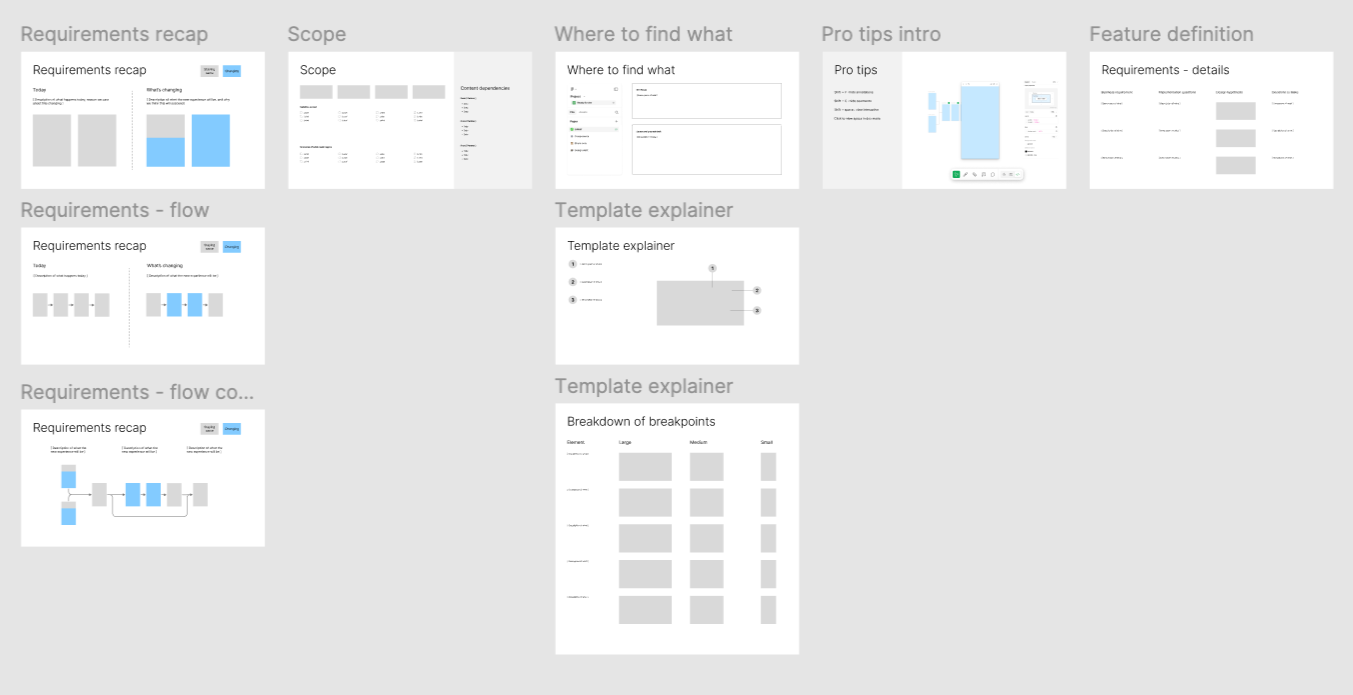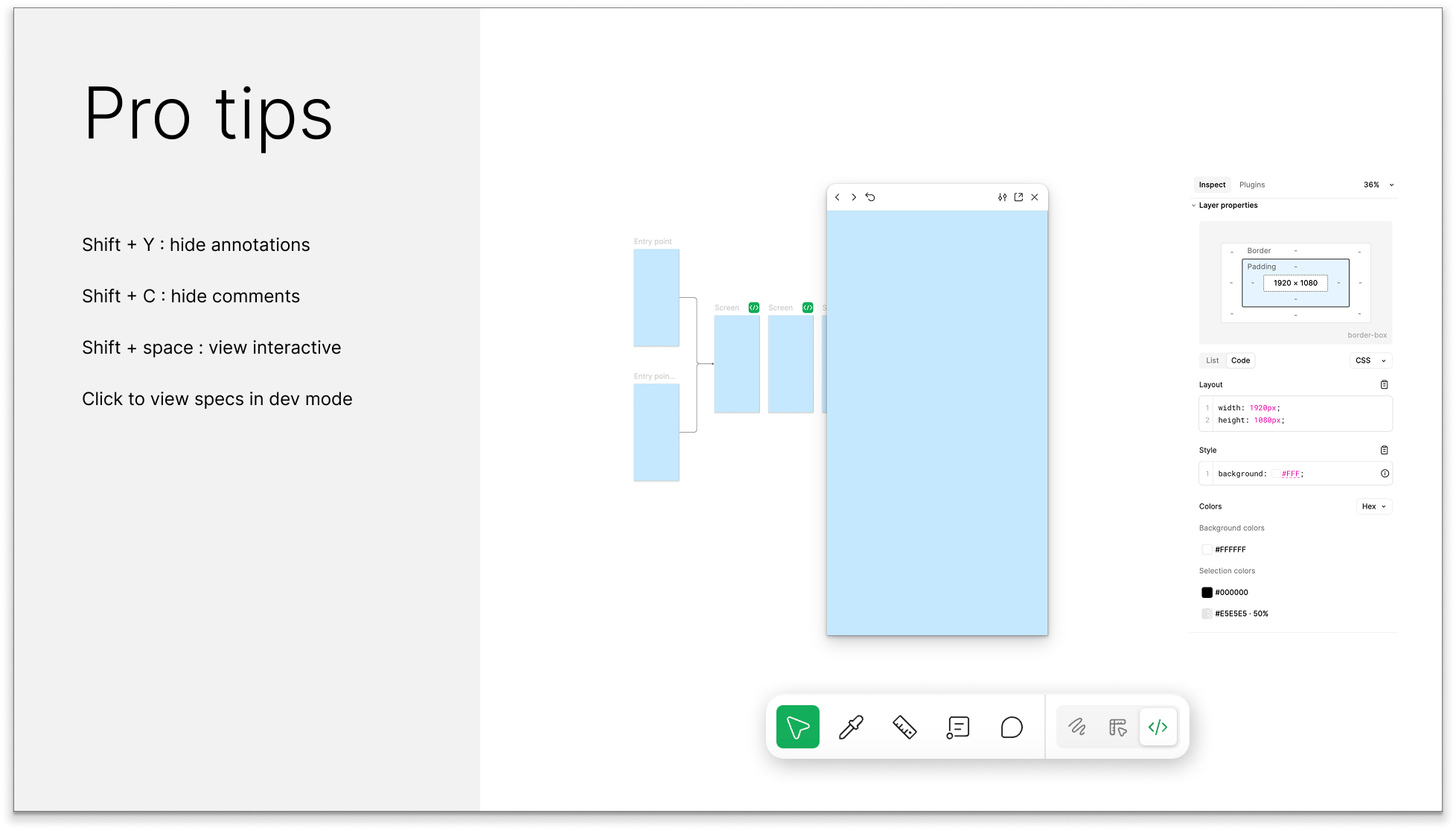← Back to Design craft
What it is: A read-me for partners as you transition from the idea to the execution.
When to use it:
When your are working through the details of how an idea is going to become real
As you go from rough examples to more detailed, high fidelity versions, this can help document the decisions
How to use it:
You can use this as early in the process as makes sense for you.
Use this as a place to brain dump as you have meetings and team work sessions
Bring others into it; this is not a single authorship undertaking
I’ve used these pages as “read me” pages as the first page in a hand off file.
This works great with
Assumption maps
Design Decision placemat
← Back to Design craft









